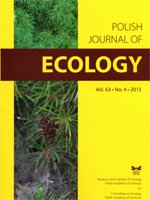The aim of this study was to explore ecological adaptation of seed microsculptures of Saussurea from different altitudes. Scanning electron microscopy was used to observe the cypselae surface of 10 taxa of Saussurea collected from the eastern edge of Qinghai-Tibet plateau, China. The results indicated that the microsculptures had clear and consistent variations in some samples collected from high (4200 m a.s.l.) and low-altitude sites (2200 m a.s.l.). The thickness of stripes and distance between stripes are increasing while sulcus depth is increasing from a low to a high altitude (P < 0.01). The seed-coat surface was becoming rougher from low to high altitude. The surviving rate of seeds was lower at high altitude than that at low altitude in all the species. The surviving rate of the seeds collected from the high altitudes was higher than that of the seeds collected from low altitudes when sown at the same altitude. All the results suggested that there is selection pressure of the altitude on the development of the microsculpture patterns, which increases absorbed sunlight, the residence time of soil water and nutrition. The changes can make the seeds survive better at extreme environments (cold and dry). The cypselae microsculpture patterns should be used as potential adaptation biomarkers for the species of Saussurea from low- to high-altitude.
How to translate text using browser tools
1 December 2015
Ecological Adaptation of the Seed Microsculptures of Saussurea from Different Altitudes (Qinghai-Tibet Plateau)
Zhitao LI,
Guozhen DU
ACCESS THE FULL ARTICLE

Polish Journal of Ecology
Vol. 63 • No. 4
December 2015
Vol. 63 • No. 4
December 2015
altitude
ecological adaptation
Qinghai-Tibetan Plateau
Saussurea
scanning electron microscope




